IncuCyte Neurite Outgrowth: Techniques and Insights
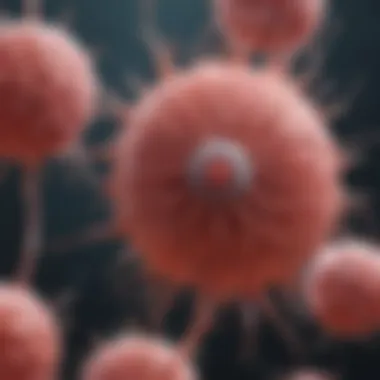
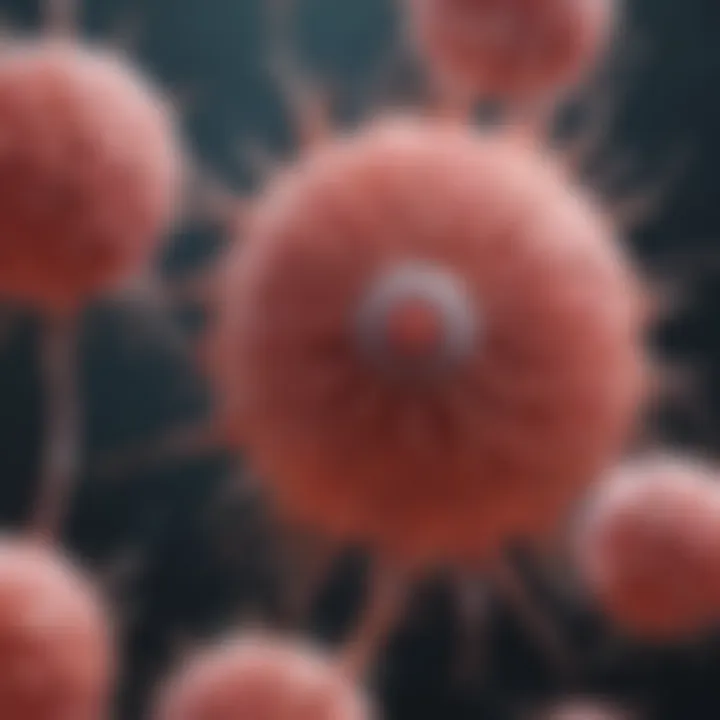
Intro
Neuroscience has undoubtedly taken tremendous strides over the past few decades, with technology playing a central role in unlocking the complexities of neuronal behavior. One such cutting-edge advancement is the IncuCyte technology, which provides remarkable insights into neurite outgrowth. This ability to visualize and quantitatively analyze neurite growth in real-time is invaluable for researchers who seek a deeper understanding of neuronal function and the underlying mechanisms that govern neuronal dynamics.
With growing interest in the field, it becomes increasingly important to dissect the methodologies and implications associated with IncuCyte neurite outgrowth analysis. This article aims to take a comprehensive look at how this technology contributes to scientific progress while also considering the potential challenges that lie ahead.
Research Overview
Summary of Key Findings
Understanding neurite outgrowth is no small feat. It refers to the process where certain cells, primarily neurons, extend their axons and dendrites in response to various stimuli. The ability to quantitatively measure these extensions gives researchers critical information about neuronal health and functionality. The IncuCyte system has emerged as a frontrunner in providing this real-time analysis.
Recent studies utilizing IncuCyte technology have highlighted several significant findings:
- Effects of Growth Factors: Different growth factors have been shown to influence the rate and extent of neurite outgrowth. Studies illustrate how specific factors can significantly alter neuronal morphology.
- Drug Evaluation: IncuCyte has been employed to assess the impact of compounds on neurite growth, proving paramount for drug discovery and neuropharmacology.
- Neurodegenerative Diseases: Research has indicated that altered neurite dynamics can be an early sign of neurodegenerative diseases, thus positioning IncuCyte as a valuable tool in early diagnosis and intervention.
Relevance to Current Scientific Discussions
The dialogue surrounding neuronal research is ever-evolving, particularly as the field faces new challenges. The IncuCyte system is more than just a measurement tool; it serves as a gateway to exploring questions that have eluded researchers for years. By integrating high-content screening with elemental analyses, the technology allows for nuanced discussions about neuronal resilience, pathophysiology, and therapeutic interventions. It fits squarely within current discussions that push for advanced methodologies to address intensive research questions effectively.
Methodology
Research Design and Approach
Utilizing the IncuCyte technology requires a robust research design informed by the specific objectives of the study. Based on the variations in neuronal context—whether stem-cell-derived neurons, primary cultures, or specific cell lines—a tailored approach is crucial. Researchers usually begin by selecting appropriate cell lines or primary neurons, followed by designing specific experiments that assess various variables, such as growth conditions, experimental treatments, and time frames for observation.
Data Collection and Analysis Techniques
Data collection with IncuCyte is accomplished through automated imaging that captures neurite growth over time. The software processes images to generate quantifiable metrics such as neurite length, branching points, and overall outgrowth area. This quantitative analysis allows for the comparison of treated versus untreated groups, ensuring that scientific conclusions are based on robust data.
- Image Analysis: Automated settings capture images at regular intervals, ensuring high reproducibility.
- Statistical Methods: Employing standard statistical techniques like ANOVA can help in identifying significant differences between groups.
Preamble to Neurite Outgrowth
Neurite outgrowth is a pivotal biological process that plays a key role in neurodevelopment and neuronal repair. Understanding this phenomenon is not just an academic endeavor; it has profound implications for various fields within neuroscience, particularly in the context of neurodegenerative diseases, developmental disorders, and even regenerative medicine. The focus on neurite outgrowth highlights how neurons extend their processes—specifically axons and dendrites—to connect with other neurons. This connection is essential for the formation of intricate neural circuits that underpin all neuronal functions.
Why emphasize neurite outgrowth? Well, it's through this process that the groundwork for complex brain networks is laid. Having a firm grasp on how and why these extensions occur allows researchers to pinpoint what goes haywire in numerous ailments, be it Alzheimer's or spinal injuries. In a way, exploring neurite outgrowth provides a lens through which we can view the dynamic world of neural plasticity and connectivity.
Defining Neurite Outgrowth
Neurite outgrowth involves the extension of neuritis—axons and dendrites—emanating from a neuron. This process begins when a neuron receives signals from its environment, including various growth factors and cytokines. In response, the cytoskeleton of the neuron undergoes rapid rearrangements that push the plasma membrane outward, forming these essential projections.
The growth cones at the tips of these neurites are like tiny sensors, probing the extracellular matrix and responding to a range of chemical gradients, electrical signals, and physical cues. This behavior is not merely reactive. Rather, it’s intricately coordinated and directed, enabling neurons to navigate their environment and establish connections that will facilitate communication throughout the nervous system. Understanding this intricate dance of extension and retraction is crucial for developing effective therapeutic strategies aimed at enhancing neuronal repair processes.
Importance in Neuroscience
The significance of neurite outgrowth in neuroscience cannot be overstated. Not only is it fundamental to the formation of neural circuitry during early brain development, but it is also crucial in mature brains for synaptic remodeling and plasticity. The capacity of neurons to adapt their connections based on experience relies heavily on their ability to extend and retract neurites. This adaptability is what allows learning to happen, making neurite outgrowth a central player in cognitive processes.
To put it succinctly, the following points encapsulate why neurite outgrowth is of high interest in contemporary neuroscience:
- Developmental Role: During the growth phase, appropriate outgrowth is essential for creating neural pathways that will be used later in life.
- Regenerative Capacity: In diseases like spinal cord injuries or certain neurodegenerative disorders, understanding neurite outgrowth can lead to therapies that encourage regeneration.
- Synaptic Plasticity: Each time a new synaptic connector is formed, the potential exists for learning and memory, underlying the cognitive function of the brain.
"Neurite outgrowth acts as the foundation for all neural communication, intricately tying together the experiences and functions of life itself."
Overview of IncuCyte Technology
IncuCyte technology represents a pivotal development in the realm of live cell imaging, particularly concerning neurite outgrowth analysis. This innovative platform offers researchers a powerful tool for real-time observation of cellular processes, enabling them to track the dynamics of neuronal morphogenesis with a level of precision that traditional methods have struggled to achieve. The implications of utilizing IncuCyte span various research fields, from neurobiology to pharmacology, highlighting its versatile nature.
One of the standout benefits of IncuCyte technology is its capability for high-throughput screening. This feature is crucial for studies focusing on numerous conditions or treatments simultaneously, as it can dramatically cut down the duration of experiments without sacrificing quality. Therefore, lab environments benefit greatly when turning to this technology—rather than manually observing cell cultures under a microscope, researchers can leverage automated imaging to gather consistent and reproducible data.
What is IncuCyte?
IncuCyte is a live cell imaging system designed specifically to provide continuous monitoring of cell cultures, enabling the analysis of cellular behaviors in real-time. This technology eliminates the need for frequent laboratory visits typically required to assess visual changes in cell cultures. Instead, it allows for a seamless observation period without disturbing the cellular environment.
The technology employs a combination of phase contrast, fluorescence, and time-lapse imaging, ensuring a comprehensive view of cellular dynamics. This multiple imaging capability is particularly vital for studying neurite outgrowth, as it affords detailed insights into neuronal development and characteristics over time, offering researchers a thorough understanding of cellular behaviors in response to varying conditions or treatments.
Technical Specifications
Imaging Capabilities
The imaging capabilities of IncuCyte play a fundamental role in its application, significantly enhancing research outcomes. One of the key characteristics of this system is its ability to capture images at various magnifications. This flexibility proves valuable as researchers can focus on specific cells or broader cellular contexts, depending on their research needs.
Furthermore, the continuous imaging capacity ensures that changes in neurite outgrowth are documented minute-by-minute. This aspect becomes especially beneficial when studying rapid cellular responses to treatments or environmental changes. In highlighting this unique feature, "live cell imaging at scale," the technology reduces subjective biases that may arise during manual observations. Herein lies the core advantage: it empowers researchers to analyze large datasets efficiently while enhancing reproducibility within the scientific process, fostering more reliable conclusions in studies centered on neuronal behavior.
Software Integration
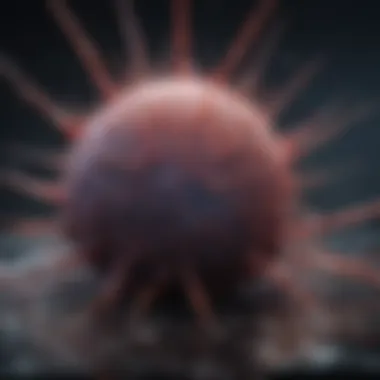
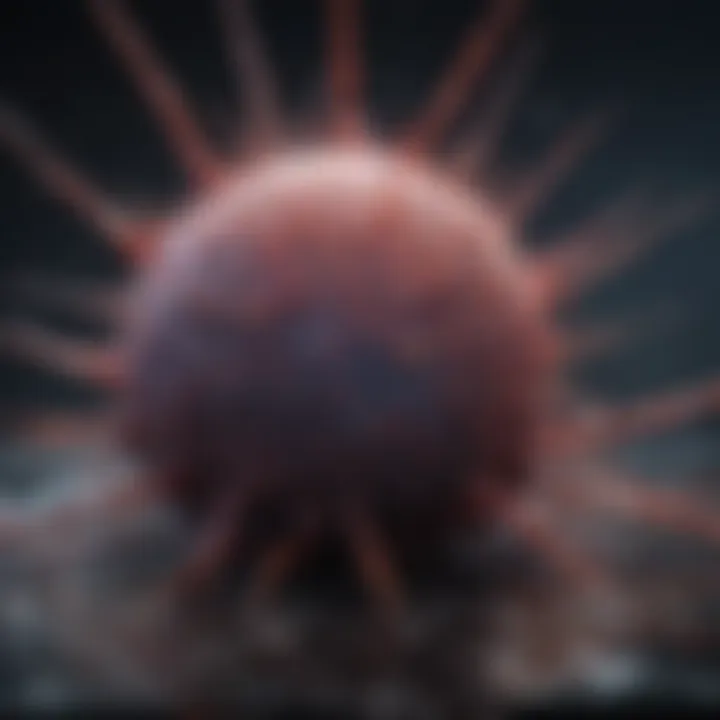
Delving into software integration, IncuCyte's platform is equipped with advanced analytical tools that aid in the quantification of neurite growth. The software not only stores vast amounts of imaging data but also offers analytical metrics customized for neuronal studies, allowing for seamless data interpretation.
A keystone feature of this software is its user-friendly interface, which accommodates researchers who may not specialize in image analysis. This aspect is pivotal because it broadens accessibility, enabling more scientists to adopt these techniques into their workflows. The capability for automated data processing can cut down time spent on manual calculations and assessments, streamlining the research workflow.
Additionally, the software supports export functionality for further analysis, enabling scientists to integrate results into their preferred data analysis toolsets. The advantages here are manifold, but notably, it brings both efficiency and flexibility for complex research frameworks.
"IncuCyte technology reshapes the landscape of cell analysis, pushing the boundaries of understanding cellular behavior in unprecedented ways."
Methodologies for Neurite Analysis
Understanding the methodologies employed in neurite analysis is pivotal for advancing research in neuroscience. Neurite outgrowth is a hallmark of neuronal plasticity and health, and the methods used to assess this process greatly influence the accuracy and reliability of research outcomes. This section aims to dissect various techniques, highlighting their benefits and any caveats they may present.
IncuCyte Live Cell Imaging
Real-time Monitoring
Real-time monitoring is a standout characteristic of the IncuCyte technology. It allows for continuous observation of neurite outgrowth without disrupting the culture. This feature is particularly significant since it enables researchers to track changes in neuronal behavior under various experimental conditions as they occur, rather than relying solely on post-experimental analysis.
The benefit of real-time imaging is that it captures the dynamic nature of neurite growth, offering insights into live cell interactions that could be missed with traditional methods. However, some researchers may argue that the limitations can include a potential loss of resolution due to the imaging process, particularly over extended observation periods. Thus, while it provides a wealth of data, careful consideration must be given to its analysis to avoid misleading conclusions.
Data Acquisition Techniques
Data acquisition techniques in IncuCyte involve sophisticated algorithms that transform raw image data into quantifiable metrics. This offers a key characteristic of allowing researchers to collect large sets of data efficiently and systematically. The automation of image acquisition streamlines the process, reducing human error, and improving reproducibility.
The unique feature here lies in the software that enables these processes to occur smoothly. Yet, one must remember that merely collecting vast amounts of data is not sufficient; it demands adept handling and analysis. Inaccurate interpretations can arise from overlooking contextual factors inherent in neuron growth, underscoring the importance of comprehensive training in using these tools effectively.
Culturing Neurons for Observation
Key Cell Lines
Key cell lines form the backbone of most neurite outgrowth studies. Specific lines like PC12, primary cortical neurons, or Neuro-2a cells are often chosen for their established characteristics and ease of culture. The relevance of selecting the right cell lines cannot be understated, as different neurons may respond variably to the same stimuli due to inherent genetic and biological differences.
These cell lines often serve as model systems for neurodegenerative diseases, drug response, and developmental studies, making them essential for generating reproducible data. However, the choice of cell line is also a double-edged sword. Some researchers may encounter challenges as certain cell lines can display phenotypic drift over time, potentially skewing results if not routinely verified against established benchmarks in the field.
Environmental Conditions
Environmental conditions play a crucial role in culturing neurons and can significantly influence neurite outgrowth. Factors such as substrate stiffness, availability of growth factors, and temperature must be optimally controlled. These conditions affect cell adhesion, differentiation, and subsequent growth patterns of neurites.
One of the primary benefits of carefully managing these environmental factors is the enhanced predictability of experimental outcomes. When conditions are tightly regulated, researchers can replicate results relatively precisely. However, a disadvantage here is that setting these parameters correctly often demands substantial resources and expertise, making it a challenge for laboratories with limited amenities.
"The methodologies chosen for neurite analysis are not just technical choices; they shape the very narrative of neuronal behavior. Choosing wisely can yield profound insights, while missteps may obscure the truth."
In summation, methodologies for neurite analysis using IncuCyte technology not only provide a framework for live observations but also an intricate landscape where cell lines and environmental conditions must be judiciously navigated. As the field evolves, so too will the intricate techniques that allow researchers to untangle the complexities of neuronal growth and behavior.
Measuring Neurite Outgrowth
Measuring neurite outgrowth stands as one of the cornerstones in understanding neuronal behavior. This meticulous process involves quantifying how neurons extend their neurites in response to various stimuli. It provides key insights not only into fundamental neuroscience but also into applied research such as drug development and neurodegenerative disease studies.
Effectively measuring neurite outgrowth allows scientists to assess neuronal health, functionality, and adaptability. By capturing quantitative data, researchers can draw significant conclusions about how neurons interact with their environment. This gives rise to numerous implications in terms of therapeutic strategies and understanding neuronal mechanics.
Quantitative Metrics
Quantitative metrics serve as a fundamental approach for clear measurements in neurit outgrowth studies. These metrics can often be categorized into length and complexity as well as branching analysis.
Length and Complexity
The assessment of Length and Complexity plays a critical role in analyzing how far neurites grow and the intricacy of their structures. Length refers to the straight-line measurement from the neurite base to its tip. Complexity, on the other hand, captures the overall organization of the neurite, considering the number of segments and their spatial arrangement. The combination of these two measures offers a quantitative lens through which one can evaluate neuronal health and response to various experimental conditions.
The unique feature of using length and complexity metrics is their ability to provide a straightforward quantification that resonates with several biological hypotheses. Length is often seen as a benchmark metric, while complexity dives deeper into the architecture of the neurite, presenting a fuller picture of neuronal activity.
However, this approach is not without its pitfalls. While length offers direct measurements, it can sometimes overlook nuances in neuronal behavior, particularly in regards to how complex signals are processed within the neuron.
Branching Analysis
Branching analysis investigates the formation of branch points along the neurite. This specific aspect is pivotal, as branching patterns can indicate neuronal health and potential integration within neural circuits. The rapid development of branches from the original neurite signifies an adaptive response to environmental cues or injuries.
A key characteristic of branching analysis is its emphasis on connectivity. More branches can suggest a neuron is making more connections, which is generally seen as beneficial during neural recovery or development. Branching metrics facilitate exploration of complex network dynamics, which are vital considering the intricate architecture of neuronal systems.
One major advantage here lies in branch analysis' capacity to differentiate between healthy and compromised neurons. However, the challenge arises when interpreting these branching patterns as they can vary widely among different cell types and conditions, leading to potential inconsistencies in interpretations.
Analyzing Data Outputs
Understanding and interpreting the data output from these quantitative assessments is where the rubber meets the road. Analyzing data outputs is crucial for deriving meaningful conclusions from the numbers. Researchers must sift through raw data to identify patterns, correlations, and deviations.
A robust approach includes integrating statistical methods with visualization techniques to effectively communicate findings. This helps in bridging the gap between intricate numerical data and broader implications for neuronal health. Moreover, the accuracy in interpretation can be challenged by various factors, like variability in sample preparation and environmental conditions during experimentation.
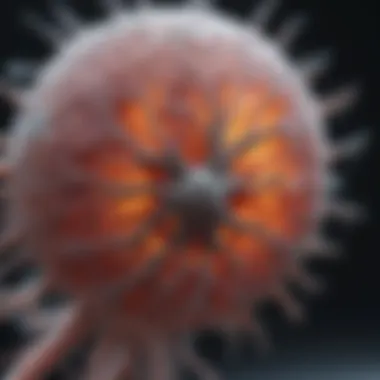
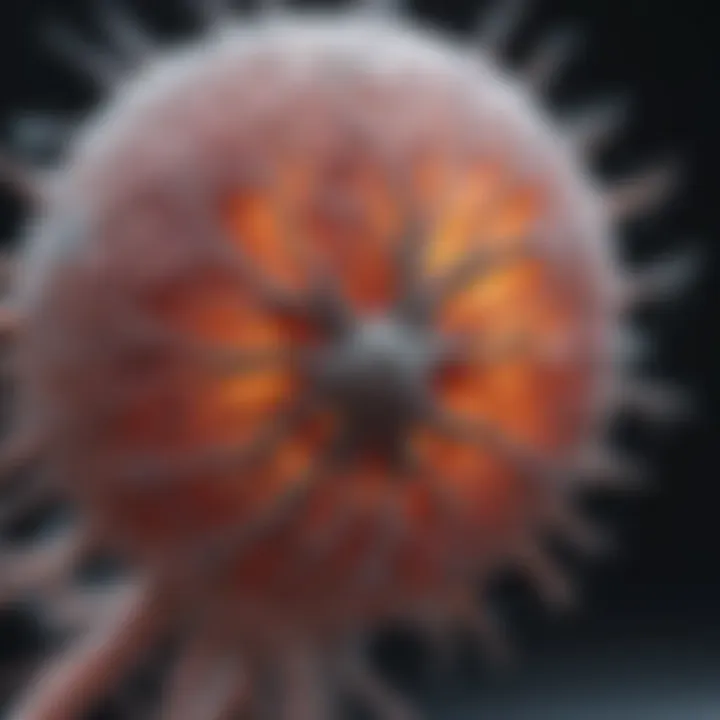
In sum, measuring neurite outgrowth through quantitative metrics such as length, complexity, and branching analysis forms the backbone of neuronal research. The blend of these factors yields a rich tapestry of data that holds significant potential for advancing our understanding of neuronal functionality and pathology.
Applications of IncuCyte in Research
The utilization of IncuCyte technology brings a significant edge to neuroscience research. This section aims to elucidate the myriad applications of this platform, especially how it contributes to understanding complex biological processes. Among its many advantages, IncuCyte enables researchers to gain deeper insights into neuronal behavior, which is crucial for both fundamental research and clinical applications. By harnessing the capabilities of this technology, scientists can investigate a range of phenomena—from neuronal health to responses to various drugs, giving way to a clearer comprehension of neuronal physiology and pathology.
Neurodegenerative Disease Studies
Neurodegenerative diseases like Alzheimer’s and Parkinson’s show the complexities involved with neuronal health and function. In studying these ailments, the IncuCyte system plays a pivotal role, as it permits real-time observation of neurite outgrowth patterns. This makes it possible to evaluate the effects of different neuroprotective agents or toxic compounds on neuron survival and neurite health.
For instance, researchers can explore how specific treatments influence the branching and length of neurites in primary neuron cultures derived from mutated mouse models. By quantifying these parameters, scientists can effectively assess whether a new drug has the potential to halt or even reverse neurodegeneration.
Additionally, studies have shown that incorporation of growth factors can significantly influence neuronal regeneration in models of these diseases, thereby opening doors to potential therapeutic approaches. These insights allow for an evidence-based understanding of disease mechanisms, enhancing the search for effective treatments.
Pharmacological Investigations
Pharmacological applications represent another significant avenue for IncuCyte technology. This aspect focuses on the evaluation of how different drugs interact with neuronal cells, providing a robust platform for screening potential neuropharmacological agents. The technology facilitates a detailed inspection of drug efficacy and safety, allowing researchers to monitor neurite outgrowth responses to various compounds in real time.
For instance, drug assays conducted using the IncuCyte have demonstrated varying effects on neuronal morphology. It can be particularly useful in identifying both beneficial and detrimental impacts of pharmacological agents. This leads to a more informed selection of candidates for advanced clinical studies. Using real-time data, researchers analyze dose-response curves that depict how neurite growth is stimulated or inhibited based on diverse pharmacological conditions.
Moreover, the platform allows for the assessment of multi-target compounds that might simultaneously affect multiple pathways, enhancing the precision of drug development efforts. Overall, the application of IncuCyte in pharmacological investigations can streamline the drug discovery process by providing quick and reliable data outputs.
Developmental Biology Research
In the realm of developmental biology, IncuCyte technology is invaluable for studying the differentiation of neuronal cells and the timeline of neuronal morphogenesis. Through the detailed tracking of neurite outgrowth, scholars can gain insights into how developmental signaling pathways influence neuron maturation and connectivity.
This exploration aids in understanding how complicated processes like synaptogenesis occur and the roles different substrates play. For example, researchers may use the system to study the impact of extracellular matrix components on neurite development. By manipulating the cellular environment, they can observe how variations in these components influence neuronal shape and growth direction.
Furthermore, the insights from developmental studies can significantly inform approaches to regenerative medicine, particularly in the context of treating injuries to the nervous system. As such, the implications of IncuCyte in developmental biology are profound and extend beyond understanding biology to actual clinical applications, paving the way for innovative therapies that consider the intricate dynamics of neuronal development.
"The ability of IncuCyte to monitor live cell responses provides a unique lens into the intricate dance of cellular communication and growth in both health and disease."
In summary, the applications of IncuCyte technology in research extend impressively across various domains, particularly in understanding neurodegenerative diseases, pharmacological investigations, and developmental biology. Each of these areas benefits from the nuanced insights made possible by real-time data, underscoring the technology's importance in advancing neuroscience.
Factors Influencing Neurite Outgrowth
Neurite outgrowth is a complex process that plays a crucial role in the formation of neural networks. Understanding the factors that affect this growth is essential for both practical applications and theoretical insights in neuroscience. In this section, we highlight the various drivers of neurite development, underscoring how specific elements contribute to neuronal health and functionality.
Cytokines and Growth Factors
Cytokines and growth factors serve as vital signaling molecules in the brain, greatly influencing neurite outgrowth. These proteins work almost like postmen, delivering messages that dictate how and when a neuron should grow. Neurotrophic factors, such as brain-derived neurotrophic factor (BDNF) and nerve growth factor (NGF), are particularly important. Their presence can stimulate neurite elongation, impacting functions related to learning and memory.
In situations where these factors are deficient, such as in certain neurodegenerative diseases, the ability of neurons to regenerate can be severely compromised. This dependency on growth factors highlights a crucial consideration for research and therapy: researchers must find effective means to modulate these signals.
"Without the right nurturing elements, neurons may lag behind in their developmental race."
Key points concerning these factors include:
- Stimulating Growth: Proper levels of cytokines can boost neuronal activity, leading to expanded growth.
- Diverse Roles: Different growth factors can have varying effects depending on the type of neuron.
- Therapeutic Targeting: Enhancing these factors can lead to new treatment strategies in neurodegenerative conditions.
Chemical Influences
The chemical environment in which neurons exist plays a significant role in guiding neurite outgrowth. Various substances, ranging from ions to small molecular compounds, can either facilitate or hinder neuronal growth. For instance, calcium ions are known to be pivotal in several cellular processes and can impact neurite elongation.
Chemical gradients in the surrounding environment can establish enhanced growth pathways. Certain chemicals, like extracellular matrix proteins, can provide a scaffold for growth, guiding neurites to their target destinations. On the flip side, toxic substances or inhibitors can significantly thwart growth and lead to cell apoptosis.
Considerations on chemical influences include:
- Nutritional Factors: Availability of essential nutrients plays a role in maintaining healthy neuronal growth.
- Pathologic Conditions: Inflammatory cytokines can alter the growth trajectory of neurons.
- Drug Interactions: Pharmacological agents can effectively modify chemical environments, making them a focal point in therapeutic settings.
Mechanical Properties of the Environment
Lastly, the mechanical aspects of the neuronal environment cannot be overlooked. The stiffness or rigidity of the substrate on which neurons grow can influence their outgrowth. Research suggests that neurons may respond to the physical properties of their surroundings much like a gardener who selects the right soil for their plants.
A softer environment may promote growth, while a rigid one could impose stress, leading to negative consequences for neurite development.
Important aspects to consider include:
- Substrate Composition: Variations in material can lead to different levels of neurite elongation.
- Tensile Forces: These forces can influence morphology and guidance of growing neurites.
- Overall Cellular Interaction: The interactions between cells and their mechanical environment can have cascading effects on growth pathways.
By taking into account these influential factors—cytokines and growth factors, chemical influences, and mechanical properties—researchers can gain deeper insights into neurite outgrowth, aiding in the development of new strategies for promoting neuronal repair and regeneration. Understanding these components serves as a jumping-off point for future experiments and applications in neuroscience.
Comparison with Other Techniques
When it comes to understanding neurite outgrowth, comparing various methodologies used in research is essential. Each technique bears its own set of advantages and disadvantages, influencing the interpretation of results significantly. Recognizing the differences allows researchers to make informed choices tailored to their specific study needs.
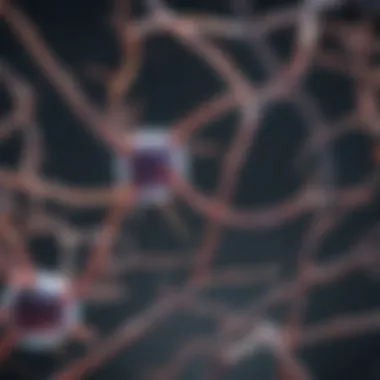
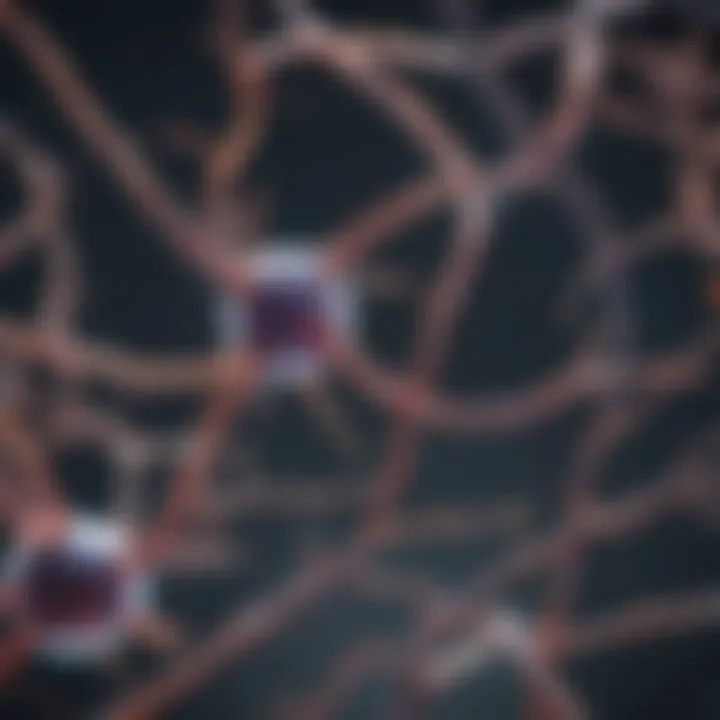
In the realm of neurite measurement, one cannot overlook the importance of traditional microscopy and automated systems. Both approaches have played pivotal roles in shaping our knowledge of neuroscience but have unique characteristics that suit different research scenarios.
Traditional Microscopy
Traditional microscopy has been a cornerstone in cell biology, including neurobiology, for a long while. Commonly wielded with a variety of optical setups—such as phase contrast or fluorescence—this method empowers researchers to visualize cellular structures directly. However, it comes with a few caveats.
- Manual Monitoring: Researchers often need to stay glued to their microscopes, making it laborious and time-consuming. You can't just press "play" and walk away.
- Subjectivity in Analysis: The results can be influenced by individual investigator biases. One researcher might see a neurite as long and impressive, while another might consider it undersized. Consistency can be a real pickle.
- Limited Data Management: Capturing images can result in data overload. Analyzing and cataloging these images can turn into a messy task, potentially leading to errors in data interpretation.
Despite these limitations, traditional microscopy still offers high-resolution imagery, a crucial aspect for discerning intricate details. It serves well in confirming hypotheses based on direct visual observation but lacks the streamlined efficiency modern researchers seek.
Automated Systems
Shifting gears to automated systems, these tools have surged in popularity for their ability to streamline processes and enhance efficiency. The automation minimizes human error, which is a breath of fresh air in neurobiology. These systems often come equipped with sophisticated algorithms that can analyze neurite outgrowth metrics.
- High Throughput: Automated systems can analyze multiple samples simultaneously, saving a boatload of time. This enables larger studies and more statistically valid results.
- Consistency and Objectivity: The use of standardized algorithms reduces the variability seen with human observation. Results are repeatable, allowing for more reliable comparisons across studies.
- Integrated Analytical Tools: Many automated platforms, including IncuCyte systems, have built-in metrics for quantifying neurite outgrowth, making it easier to draw conclusions without the added hassle of dealing with mountains of raw data.
Nonetheless, automated systems come with their set of challenges. For instance, they may require significant initial investments, which can be daunting for smaller labs. Furthermore, while the precision is impressive, over-reliance on technology can sometimes overlook qualitative factors that only a trained eye might catch.
"Both traditional microscopy and automated systems have their roles in neurite outgrowth analysis, but understanding the intricacies of each can vastly improve the research outcome."
Challenges and Limitations
Understanding the challenges and limitations of IncuCyte neurite outgrowth technology is pivotal for researchers and professionals grappling with intricacies of neuronal studies. While this technology makes strides in observing and analyzing neurite dynamics, focusing on these limitations can aid in refining methodologies and expectations. Every tool has its vulnerabilities, and being aware of them is like having a map before entering a dense forest; it might not show you every turn, but it keeps you from getting lost altogether.
Technical Limitations
From a technical standpoint, one must recognize that the effectiveness of IncuCyte technology is often intertwined with its equipment capabilities. For instance, the resolution of images can sometimes restrict the observations one can make regarding finer neurite structures. If you have a camera with a low pixel count, you might miss the subtle changes that could lead to valuable insights. Additionally, operational factors, such as camera settings or the selection of imaging wavelengths, can directly influence the quality of data acquired.
Using IncuCyte necessitates a well-calibrated approach, as variations in setup can yield inconsistent results. Which brings to light the necessity of standardizing procedures to guarantee comparability between time-lapse data.
"Precision in settings is the bedrock of meaningful measurements; without it, the data can mislead rather than inform."
Biological Variability
Diving deeper into the biological realm, one encounters a layer of complexity as unpredictable as trying to anticipate the weather. Biological variability primarily stems from the inherent differences between neuronal cultures, including genetic backgrounds, cell age, and growth conditions. Each of these factors can sway outcomes, rendering experiments less reproducible. Consider this: two cultures grown under seemingly identical conditions might still react differently to the same treatment, skewing results more than a pinball machine does when jolted by unexpected forces.
This variability challenges the validity of findings, making it crucial for researchers to adopt robust experimental designs that account for these fluctuations. Understanding that no two neuronal populations are identical can be the difference between meaningful conclusions and potentially misleading data.
Data Interpretation Challenges
Finally, one cannot ignore the obstacles tied to data interpretation. The sheer volume of data generated through IncuCyte technology can be daunting. When dealing with massive datasets, trends and outliers might go unseen, leading to hasty conclusions that lack a solid foundation. It's like sifting through a haystack for a needle; if you don't know what you're looking for, it can be easy to miss the critical insights.
Furthermore, the algorithms employed for data analysis are not immune to bias. Misinterpretations can arise from algorithmic flaws or user errors, emphasizing the importance of human oversight in the analytical process. Researchers need to balance reliance on automated systems with critical thinking, ensuring that they do not overlook the nuances presented by the data.
Future Directions in Neurite Research
The landscape of neurite research is constantly evolving, fueled by the demand for better methodologies and deeper understanding of neuronal behavior. As we stand on the precipice of new discoveries, the future directions in neurite research promise to unveil layers of complexity previously uncharted. This section aims to explore the significance of emerging technologies and potential new applications, shedding light on how these advancements can benefit the field and beyond.
Emerging Technologies
In the realm of neurite outgrowth research, the next wave of innovation hinges on the integration of advanced technologies. Tools such as artificial intelligence and machine learning are making their mark. They hold the potential to analyze vast data sets that can reveal patterns previously unnoticed by human eyes. Utilizing algorithms to predict neurite behavior could revolutionize our understanding.
Another path worth mentioning is the development of 3D bioprinting technologies. This technique allows for the creation of more complex neuronal environments that mimic in vivo conditions. By fabricating scaffolds that closely resemble the natural extracellular matrix, researchers can observe how neurons grow and connect with one another in an environment that’s closer to reality.
Furthermore, the enhancement of imaging technologies plays a central role. With new imaging modalities, it’s now possible to track neurite outgrowth in real-time with unprecedented clarity. Techniques like super-resolution microscopy can inform researchers about the subcellular structures that influence neuronal growth and branching.
Potential New Applications
Looking ahead, one can't help but speculate about the new applications that will arise from these technological advancements. For instance, the ability to harness artificial intelligence in analyzing neurite outgrowth could lead to personalized medicine strategies for neurodegenerative diseases. Individualized treatment plans tailored to neuronal response patterns might become a reality.
Another exciting prospect is the enhancement of drug screening processes. With improved 3D cultures and real-time analysis, pharmaceutical companies could better evaluate how candidate drugs influence neurite growth or degeneration. This could drastically shorten the time it takes to move drugs from bench to bedside.
Moreover, understanding how mechanical forces affect neurite growth can inspire new therapeutic approaches for conditions such as spinal cord injuries. By investigating how varying stiffness of substrates influences neuronal behavior, researchers may uncover novel strategies to guide repair mechanisms in damaged nervous tissues.
In essence, as the field of neurite research continues to progress, embracing emerging technologies and exploring potential applications will be critical. As we venture further into this territory, the implications span from advancing academic research to potentially transforming clinical practices.
Finale and Implications
In the bustling realm of neuroscience, the emergence of IncuCyte technology has carved out a unique niche within neurite outgrowth research. This article has journeyed through various dimensions of this tool, providing insights into methodologies, key applications, and the intricate dynamics of neuronal behavior. As we arrive at the conclusion, it’s worthwhile to reflect on our findings and underscore their broader implications.
Summarizing Key Findings
Throughout our exploration, we’ve uncovered several pivotal elements regarding the IncuCyte platform:
- Real-time analysis: The ability to monitor neurite development in real-time has transformed how researchers engage with neuronal studies. This provides immediate feedback, allowing adjustments to experimental conditions based on observed results.
- Quantitative metrics: Measurements such as length, complexity, and branching give researchers precise tools to evaluate neurite outgrowth, which fosters a deeper understanding of neuronal maturation and pathology.
- Applications across fields: From neurodegenerative diseases to pharmacological testing and embryonic development studies, IncuCyte’s versatility opens avenues for interdisciplinary research, bridging gaps between various biological phenomena.
In summary, these findings not only highlight the technological advantages of the IncuCyte system but also emphasize its impact on enhancing the breadth of neuroscience research.
Impact on Neuroscience
The implications of IncuCyte technology reverberate throughout the field of neuroscience in several critical ways:
- Facilitating discoveries: With accurate and efficient data collection, researchers can delineate the underpinnings of neurological disorders more effectively. This leads to more targeted therapies and potential advancements in how we manage neurodegenerative conditions.
- Standardizing methodologies: As more labs adopt IncuCyte for their studies, a cohesive approach to neurite analysis emerges. This standardization helps ensure comparability of results across different research settings, strengthening the overall body of scientific knowledge.
- Inspiring innovation: The integration of advanced imaging and data analysis facilitates research that was once considered too complex or resource-intensive. IncuCyte allows scientists to harness new technologies, pushing the boundaries of what can be explored within the field.



